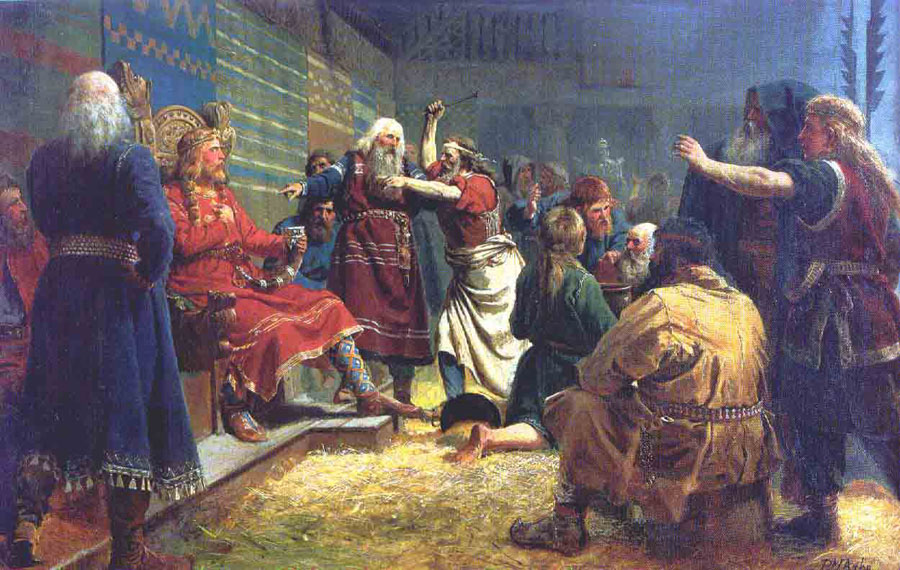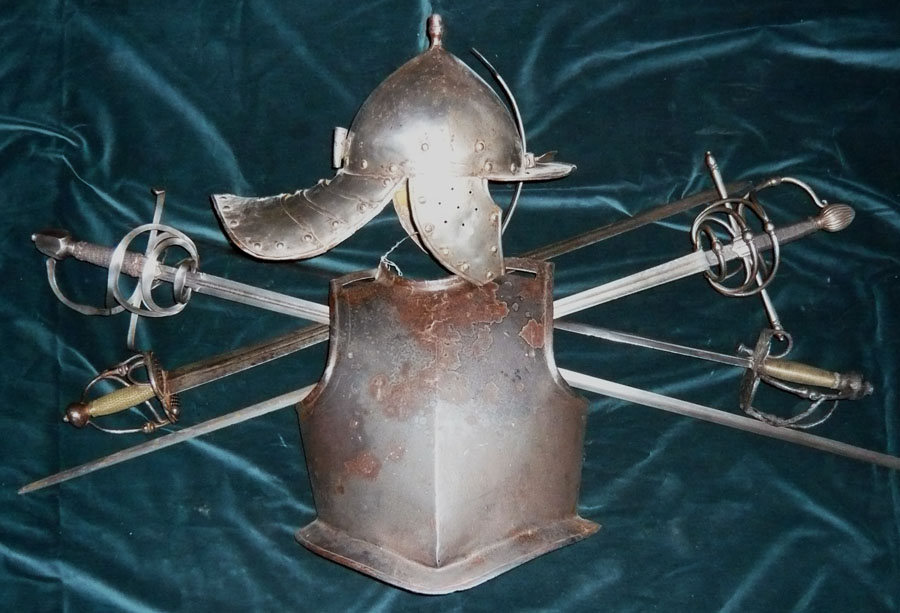The history of Norway – as I see it
Disclaimer: This might be regarded as a somewhat subjective view of the history of Norway as seen from a Norwegian’s point of view. There probably are some details that are forgotten and possibly also a couple of slight inaccuracies in the following.
As in Sweden and Denmark, Norway was a mass of more or less entangled counties, each with their own king. However, in the year 872 Haraldr Hárfagri (Hair-nice) managed to take control over most of Norway making it one country, objective to what Sweden and Denmark were. At the ripe age of 80, he abdicated and left the throne to his eldest son – Eiríkr Blóðøx (Blood-axe). Erik only was king for 5 years. He left the throne for his younger brother and moved to England and later to Spain to enjoy the nicer climate. Hákon góði, Hákon Aðalsteinsfóstri (The Good, the fostered son of Æðelstān) had been bought up by the English King Æðelstān and came back to Norway and established his position as “Over-King”.
Haraldr Blátönn (Bluetooth) had managed to get control over 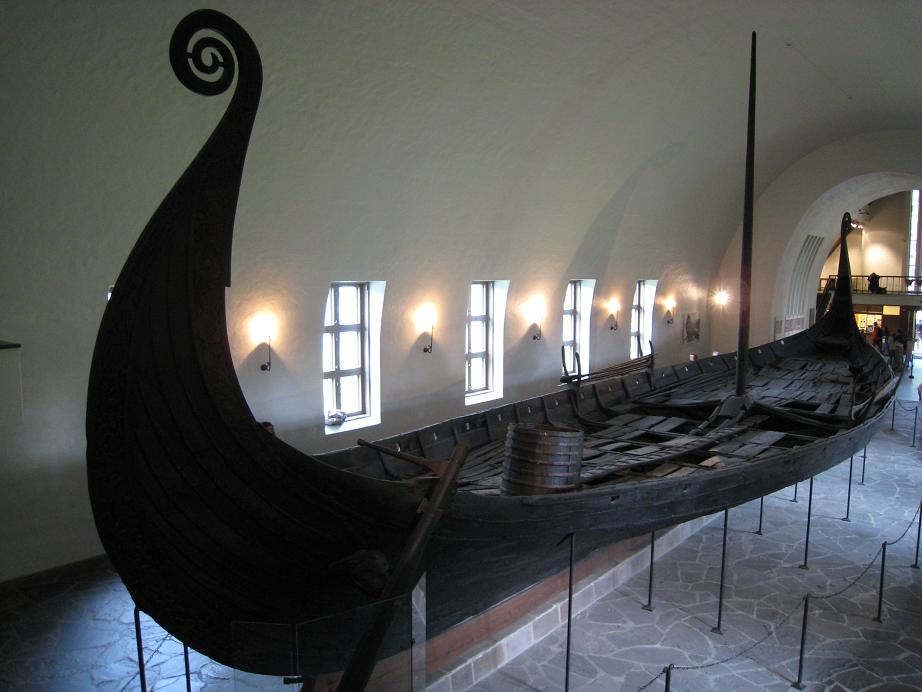 Denmark and wanted Norway as well. Through sneaky (typical Danes! They are not to be trusted) ways and with the help of some nephews he managed to get partial control over a very limited part of Norway – a short while from 961 through his nephew, the murderer Haraldr gráfeldr (Grey Hide) as Hákon Góði died without sons. In 970 the Danes were thrown out of Norway. But already in the year 1000 they were back and murdered the Norwegian king. This time the Danes managed to keep Norway for 15 years, until Óláfr Haraldsson, Óláfr hinn Helgi (The Holy) threw them out in 1015.
Denmark and wanted Norway as well. Through sneaky (typical Danes! They are not to be trusted) ways and with the help of some nephews he managed to get partial control over a very limited part of Norway – a short while from 961 through his nephew, the murderer Haraldr gráfeldr (Grey Hide) as Hákon Góði died without sons. In 970 the Danes were thrown out of Norway. But already in the year 1000 they were back and murdered the Norwegian king. This time the Danes managed to keep Norway for 15 years, until Óláfr Haraldsson, Óláfr hinn Helgi (The Holy) threw them out in 1015.
But the Danes still didn’t give up Norway and succeeded taking it back again in 1038. This time they only managed to sit for 7 years. After that the air went out of the balloon and they did not try any funny more tricks for the next 350 years or so.
In 1348-50 Norway suffered a heavy blow through the black plague. Between half and two thirds of the population were decimated. Norway went from being a strong, wealthy country to become a country, some 2000 km long, inhabited by only a couple of hundred thousand people. There was time for a change.
Scandinavian royalty was pretty entangled during the middle ages. Finland was usually a part of Sweden and Sweden often had Norwegian kings. These kings could be brothers of the king of Norway or the King of Norway could be the king of all three countries – and sometimes even of four – Denmark included.
This next part is somewhat complicated, read it twice, think about it and then read it again.
The Norweg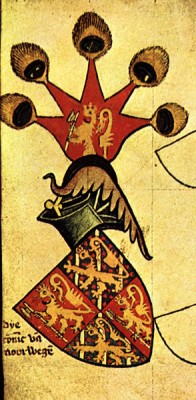 ian king Håkon VI Magnusson, the son of the Norwegian/Swedish (incl. Finland) king Magnus VII, became king of Norway, Iceland, Greenland and the Faeroe islands as of 1355. In 1362 he also took over as king of Sweden after his father. He married Margrete, the daughter of the Danish king Valdemar IV, in 1363, thereby in reality also becoming king of Denmark after king Valdemar’s death in 1375 – although his son Olav II/Oluf IV Håkonson was the officially elected king – 5 years old. King Håkon VI Magnussen suddenly and seemingly unexplainably died in 1380, only to be followed by his son’s very early and also very sudden death in 1387. It does rather stink of foul Danish play!
ian king Håkon VI Magnusson, the son of the Norwegian/Swedish (incl. Finland) king Magnus VII, became king of Norway, Iceland, Greenland and the Faeroe islands as of 1355. In 1362 he also took over as king of Sweden after his father. He married Margrete, the daughter of the Danish king Valdemar IV, in 1363, thereby in reality also becoming king of Denmark after king Valdemar’s death in 1375 – although his son Olav II/Oluf IV Håkonson was the officially elected king – 5 years old. King Håkon VI Magnussen suddenly and seemingly unexplainably died in 1380, only to be followed by his son’s very early and also very sudden death in 1387. It does rather stink of foul Danish play!
Margrete I was not idle in the time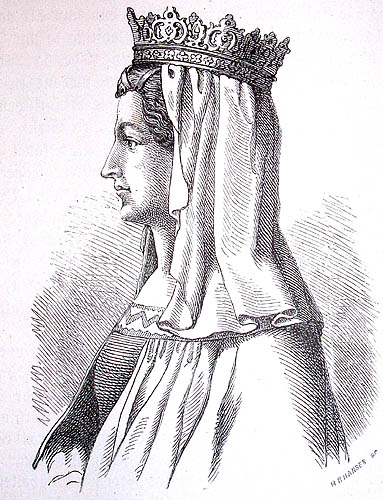 between her husband’s and her son’s death. She demanded the right to the Swedish throne on behalf of her son, who was the grandson of King Magnus VII, king of Sweden, and the son of Håkon VI – also king of Sweden (and Finland). Olav II was elected king of parts of Sweden in 1385 and in 1388 Margrete was elected regent of Norway, Denmark and parts of Sweden – within a year after her son’s suspected murder. Trap set and sprung! Håkon VI had, as I see it, married Margrete in order of creating a Nordic superpower guaranteeing peace in the region. Margrete evidently thought this to be a great idea, but under Danish (her) leadership. She took control over Norway (with Iceland, Greenland and The Faeroe Islands), Sweden (with Finland) and Denmark. As a woman really could not rule countries at the time, she imported her nephew Bogislav Vratislavsso, renamed him the more Scandinavian sounding Erik of Pomerania. He took over as king of Norway in 1389 (7 years old) and Denmark & Sweden in 1396. Guess who was the boss! This was the start of the Kalmar Union, a union meant to be between three sovereign countries (well, actually more like 6 or 7 counting Finland, Iceland, Greenland and the Faeroe Islands) with their possessions under a single monarch (1450). The union should last until 1523.
between her husband’s and her son’s death. She demanded the right to the Swedish throne on behalf of her son, who was the grandson of King Magnus VII, king of Sweden, and the son of Håkon VI – also king of Sweden (and Finland). Olav II was elected king of parts of Sweden in 1385 and in 1388 Margrete was elected regent of Norway, Denmark and parts of Sweden – within a year after her son’s suspected murder. Trap set and sprung! Håkon VI had, as I see it, married Margrete in order of creating a Nordic superpower guaranteeing peace in the region. Margrete evidently thought this to be a great idea, but under Danish (her) leadership. She took control over Norway (with Iceland, Greenland and The Faeroe Islands), Sweden (with Finland) and Denmark. As a woman really could not rule countries at the time, she imported her nephew Bogislav Vratislavsso, renamed him the more Scandinavian sounding Erik of Pomerania. He took over as king of Norway in 1389 (7 years old) and Denmark & Sweden in 1396. Guess who was the boss! This was the start of the Kalmar Union, a union meant to be between three sovereign countries (well, actually more like 6 or 7 counting Finland, Iceland, Greenland and the Faeroe Islands) with their possessions under a single monarch (1450). The union should last until 1523.
From here on it is not all that complicated any more…
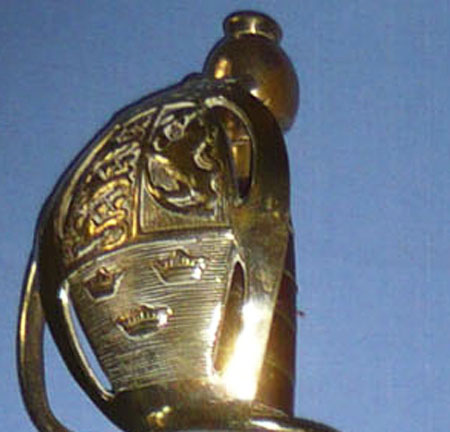 It was not to be peaceful union. The Danes were quarrelsome, but evidently not very good at war. They fought endless wars in Northern Germany, draining cash and disturbing Swedish iron exports. The union was ended as Sweden had had more than enough of the Danes by 1523, something Denmark did not really accept before in 1814! The picture shows a dragonpallask (heavy cavalry) hilt from 1785, still with the Kalmar union badge – the three Danish lions, the Norwegian lion with the axe and Sweden’s three crowns. The Danes kept the Kalmar union badge on their weapons until 1814, even if it by then was almost 300 years since the union was dissolved.
It was not to be peaceful union. The Danes were quarrelsome, but evidently not very good at war. They fought endless wars in Northern Germany, draining cash and disturbing Swedish iron exports. The union was ended as Sweden had had more than enough of the Danes by 1523, something Denmark did not really accept before in 1814! The picture shows a dragonpallask (heavy cavalry) hilt from 1785, still with the Kalmar union badge – the three Danish lions, the Norwegian lion with the axe and Sweden’s three crowns. The Danes kept the Kalmar union badge on their weapons until 1814, even if it by then was almost 300 years since the union was dissolved.
Then, in 1536 something happened on the outside of all and any agreements. Norway was suddenly declared a common Danish province – this without even consulting the Norwegians. Forget the agreement of sovereign countries. Danes are just not to be trusted – never buy an arm at a Danish auction-house without having seen it in person, they still cheat! The Norwegian provinces Iceland, Greenland and the Faeroe islands thereby came under direct Danish ownership. The year after, the reformation was enforced, confiscating the catholic church’ possessions for the king in Denmark – and Norway. Earlier the king had owned less than 20 % of the land in Norway, now this rose to more than half of the country being directly owned by the king. Much of this land was later sold off whenever the kings needed money.
The change of 1536 also meant that Norway was directly involved in all the stupid Danish wars, something that resulted in Norway having to give up Herjedalen, Jemtland, Idre & Særna in 1645 and Båhuslen in 1658 to Sweden as penance for the Danes lost war attempts. King Håkon VI Magnusson’s attempt to build a Nordic superpower failed completely due to the probable murders of him and his son. The Danes tried to pursue his idea, but failed miserably a.o. as they and the Swedes hardly understood each other (Norwegians have no problems understanding both Swedish and Danish, these do have some problems understanding us, but do not understand each others languages at all. It might also have something to do with intelligence…).
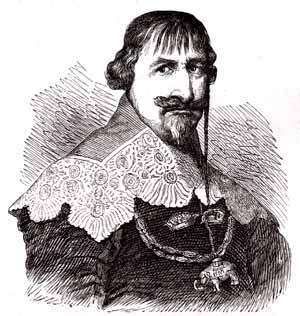 In 1604 the Danish king Christian IV wrote a new law for Norway “Den norske Landslov”. It was partly based on Magnus VI Lagebøte’s (He who bettered the law) Landslov (Law for the country) in 1274. But there were some differences. The old Leidangen was now expanded to the whole country as it became mandatory for the farmers to arm themselves at their expence according to the size of the farm. In this way the Danish king could build up a substantial army at no cost to him. It should, however, be mentioned that Christian IV also did a lot of good for Norway and that he probably was the least bad king we had over the 430 year night. The timber export from Norway to England and Holland flourished, the export of dried fish to most of Europe the same. But high export duties were enforced on this trade. It was also Christian IV that bought the 8000 secondhand Tessak’s, demanding that the Norwegian farmers bought them from him. But Christian IV ran Denmark/Norway in to heavy debts through his wars.
In 1604 the Danish king Christian IV wrote a new law for Norway “Den norske Landslov”. It was partly based on Magnus VI Lagebøte’s (He who bettered the law) Landslov (Law for the country) in 1274. But there were some differences. The old Leidangen was now expanded to the whole country as it became mandatory for the farmers to arm themselves at their expence according to the size of the farm. In this way the Danish king could build up a substantial army at no cost to him. It should, however, be mentioned that Christian IV also did a lot of good for Norway and that he probably was the least bad king we had over the 430 year night. The timber export from Norway to England and Holland flourished, the export of dried fish to most of Europe the same. But high export duties were enforced on this trade. It was also Christian IV that bought the 8000 secondhand Tessak’s, demanding that the Norwegian farmers bought them from him. But Christian IV ran Denmark/Norway in to heavy debts through his wars.
Taxes had been fairly acceptable in Norway in the 14-1500’s, but from the 1600’s on they really became heavy. The Danish wars cost a lot of money and as result parts of the Norwegian population was virtually taxed to death/starvation. One of the favorite Norwegian hobbies started at this time – cheating on you taxes. It is still popular!
As the Danish nobility took a large chunk of what could have been Danish taxes, the king’s mayor income in Denmark was the taxation of the Øresund sound (between Sweden and Denmark). When at war with Sweden, these did not amount to much. As a result, most of the kings taxes came from Norway. Although Norway was the poorer country with the smaller population and had to hold an army of some 11 000 men at Norway’s own cost, the taxes sent to Denmark equaled more than 1/3 (Norway 506 000 riksdaler/Denmark 854 000 riksdaler) of the total taxes in Denmark. But Denmark spent more than half of the Danish taxation (468525 riksdaler) just to uphold the army, so in reality Norway was taxed way more heavily than Denmark as Norway had to pay for an equally large army in addition to the taxes sent to Denmark.
Typical arms of the 1600’s. The officers could have rapir’s (the swords on top), the enlisted man Schwedendegen, lobstertail helmets were in use, as was the breastplate.
In 1660 things took an even more sinister turn. Until then the kings of Denmark had been appointed by the Danish council, but they had inherited Norway. Fredrik III was now acclaimed king in an absolute monarchy with next to no legal limitations, also resulting that Norway was governed from Copenhagen from then on. New laws were enforced in Denmark and Norway. Sweden went to war in order to obtain control over Øresund and the Danish national economy was in shambles. The king sold off parts of the crown goods in Norway to meet it’s creditors. Later land was also sold to peasants, so a number of Norwegian farmers owned their land by the late 1600’s/early 1700’s. Regulars armies under the king were established, while it earlier was the nobility that “loaned” their king their men when needed. The state’s bureaucracy expanded vastly and all this cost money, serious money. Up to now, Denmark/Norway had been very strong in naval warfare, but the countries were almost demilitarized on land. In the years after 1660, the army that only had been 1200 men serving at the various fortresses, expanded to 29 000 men in 1670 and a number new fortresses were to be built over the coming 100 years. An interesting consequence of the king giving the creditors land as payment for debts, was that he now could tax his former creditors. They really are rather sneaky, these Danes!
While the Danes had concentrated on stabilizing their economy, Sweden had built an empire around the Baltic sea. Sweden now controlled Finland, Estonia, Livonia, Karelia and Ingria, thereby denying Russia access to the Baltic sea. Sweden also had control over large parts of Germany and had taken it’s West coast (Båhuslen & Skåne) back from Denmark/Norway. Karl XII takes over as king of Sweden in 1697 – age 14. The Great Nordic War stage is set and the war starts in 1700. If you want to read more about this war, read the link. In 1718 Karl XII attacks Norway again – and is shot (don’t these Swedes ever learn? You can’t win a war with Norway, we are worse than Afghanistan). Denmark, most stupidly took over the Swedish holdings in northern Germany.
The crown goods sales in Norway continued throughout the 1700’s. Farms and even churches were sold. More and more farmers came to own their own land. The water driven sawmills greatly increased the value of the Norwegian timber export. The silver mines at Kongsberg had 4200 workers by the middle of the century and blossomed. Dry fish export was prosperous. Other trade and the large Norwegian merchant fleet made serious money. But a third of all Norwegian taxes went to Denmark in return for domestic investments there – next to nothing of value was returned to Norway. Norway wanted a university and it’s own bank – denied! The Norwegians were getting seriously tired of being a Danish province instead of how it should have been – opposite, with Norway at the drivers seat – by the turn of the century.
Flåteranet (The fleet robbery)
In 1807 England 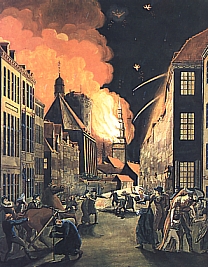 does something that resulted in grave consequences from my point of view. Denmark/Norway were neutral in the Napoleonic wars. In 1807 England sends a naval fleet of more than 400 vessels for a friendly visit to Copenhagen, then suddenly demanding that the Danish/Norwegian fleet was to be handed over to the English and then to be returned after war. They bombarded Copenhagen and took off with 79 Danish naval vessels, complete with all their equipment. Read more about it in the link. This of course resulted in Denmark/Norway joining France against England.
does something that resulted in grave consequences from my point of view. Denmark/Norway were neutral in the Napoleonic wars. In 1807 England sends a naval fleet of more than 400 vessels for a friendly visit to Copenhagen, then suddenly demanding that the Danish/Norwegian fleet was to be handed over to the English and then to be returned after war. They bombarded Copenhagen and took off with 79 Danish naval vessels, complete with all their equipment. Read more about it in the link. This of course resulted in Denmark/Norway joining France against England.
The English now arm Sweden and enforced an embargo on Skagerak, the sea between Norway and Denmark. The French arm Denmark and Denmark arms Norway with their 18. century weapons after receiving the more modern French weapons. (Great for DkN arms-collectors in Norway today!) Read about the Napoleonic Wars.
Norway was in no way self-sufficient on food. Norway is in the far north of Europe. Oslo, in the southern part of Norway, is on the same latitude as Anchorage and almost half the country is north of the Arctic Circle. With “9 months of snow and three months of sleet and slush” Norwegian agriculture was not sufficient to feed the population. The embargo of Skagerak resulted in a massive famine in Norway. People in southern Norway even rowed to Denmark to get food for their families.
The Napoleonic Wars drove Denmark into state bankruptcy and they lost Norway to Sweden. They even finally had to admit that the Kalmar Union was over and done with.
The United Kingdoms of Sweden and Norway
A home rule was established in Norway in 1807 as a result of the blockade. It was led by the Danish prince Christian August of Augustenborg, the former Governor-general of Norway. When Sweden attacked Norway with a vastly superior force in 1808, they were beaten back under his leadership. That was enough for the Swedes to want him as their next ruler, but he regretfully died. What is it with these Swedes, seeking out an enemy as their king? Napoleon’s general Jean Baptiste Bernadotte was then chosen king of Sweden under the name Karl Johan.
Norway had by this time written a new constitution – Grunnloven – and wanted to stay an independent monarchy. Sweden had invaded Norway on numerous occasions since the mid 1500’s, but were always beaten back. In late 1814 the Treaty of Kiel was signed, giving Norway to the Swedish king. The Norwegian enthusiasm was not overwhelming and the Danish crown prince then residing in Norway was appointed as sovereign king of Norway. Sweden sent an army of 65 000 men across the border in Southern Norway, but they never got very far. Anyhow negotiations were made and the final outcome as the Norway and Sweden should stay two independent countries with only a king in common. Wikipedia has a really good article on the Union between Norway and Sweden.
Until the 1850’s the new union worked fairly well. Norway had its own parliament (Stortinget) and made their own laws for Norway. Swedish influence was limited, with one important exception: All foreign policy was dictated from Sweden. Norway’s merchant fleet was way larger than the Swedish and Norway wanted Norwegian consulates World Wide. Denied! This was the beginning of the end of the union. A lot of politics were involved, but read more about those on the net. Real political trouble started in 1870 and culminated in 1884. Norway also started a massive arms race, built border fortresses on the border against Sweden and the government subsidized arms suitable for warfare to the people.
In 1905 Stortinget (the Norwegian house of parliament) passed a consular bill and the king refused to sign it. Stortinget then declared the union for over, but the naive Swedes did not accept this and for starters demanded an election (Swedes tend to be pretty greedy and dim, but they are at least fairly honest – not like the Danes at all). An election there was: 368 208 voted for dissolving the union, 184 were against! How on earth could the Swedes expect anything else? 23 000 Norwegian soldiers were placed along the Swedish border.
Through the Karlstad convention an agreement was made: A couple of the latest built Norwegian border fortresses were to be torn down – period.
Danish prince Carl was elected as king and ascended the throne as King Håkon VII in November 1905. The Norwegian economy underwent rapid growth as electrochemical and electro-metallurgical industries were built up, hydro-electric power was harnessed and new products appeared on the market. The merchant fleet expanded. Population grew rapidly and unemployment fell.
Norway was neutral in WW1, but suffered heavy losses to the merchant fleet and due to blockade. The depression of the 1920’s and -30’s hit Norway hard as a result of this, but by the mid 1930’s economic recovery was once again under way.
The labour party took over the government in 1935 and turned a completely blind eye to what was happening out there in the Big World. Demilitarizing and neutrality, that was what they stood for (were they of Swedish descendants? Dim-witted and greedy?). When the Germans suddenly occupied Norway in 1940, they were met with the same weapons that frightened the Swedes at the turn of the century. It is said that the rifle model that killed most Germans (few!) in the first days was the M1891 Remington carbine as the newer stuff was locked away! I would really like going against MG34’s, MP38’s and Mausers with a relic.
Denmark was taken without bloodshed and about 40 000 German soldiers were enough to hold the country. Norway was taken with, over time, bloodshed and it would take some 330 000 German soldiers throughout the war to hold a degree of control over the more densely populated regions. Norway had a population of about 2,7 mill at the time. Afghanistan!
Long story short – the war ended and Norway struck oil. A lot of oil. Norway was for many years the Worlds #3 largest oil exporter. Even a labour government could not avoid Norway getting to be one of the richest countries in the World, but they do make history repeat itself. Norway has a labour led government and the Norwegian soldiers are still running round with 50 year old rifles!
Well, this is the true truth, not necessarily the whole truth, but at least the truth as I see it. I really wish the schools would stop teaching all that nonsense.
